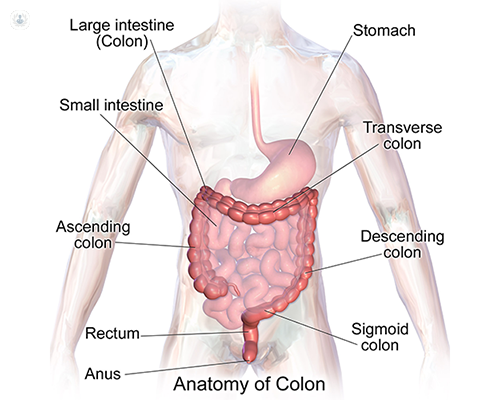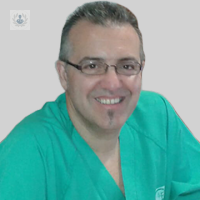Causes of colon polyps
Written by:Polyps are abnormal growths in the tissues. Within the specialty of Gastroenterology , polyps are a bulge of the lining of the digestive tract. The specialist who performs endoscopies displays these polyps in a section of pipe that is exploring: in the esophagus, stomach, small intestine or colon. The most common digestive polyps are polyps in the colon, ie those in the large intestine.
These benign tumors sometimes grow on stalks and fungi appear, and in others, may be flat. Often patients have several polyps in different parts of the colon. Some of these may contain small cancer, known as malignant polyps areas.

Causes of colon polyps
Polyps in the colon are very common in adults. In fact, the odds of having polyps increases with age. While they are not common in people aged 20 years, it is estimated that an average of 60 years old person without special risk factors for polyps has a 25% chance of finding polyps during a colonoscopy.
It is not known what causes the polyps. Some experts believe that a diet high in fat and low in fiber may predispose the formation of polyps. And besides, there may be a genetic risk of developing polyps.
The biggest risk factor for developing polyps is being older than 50. A family history of colon polyps or colon cancer increases the risk to develop polyps.
They are of different histological type: adenomatous, hyperplastic and downy, among others. It is therefore very important examination under a microscope. The risk of degeneration (malignant) is related to the type of polyps according to histology, with the size and the years of evolution and other extrinsic patient factors such as snuff or familial predisposition.
Treatment for colon polyps
Polyps are growths that may precede tumors, so it is recommended to remove them .
The technique of choice to treat polyps is the use of endoscopic therapy. Most polyps found during colonoscopy can be completely removed during the procedure itself. There are several techniques available for disposal; most involve cutting with a wire (polypectomy snare) with biopsy forceps and / or burn out the polyps with electric current or argon gas. This is called resection of polyps, also known as polypectomy.
Because the lining of the gut is insensitive to cuts or burns, resection of polyps no discomfort. Resected polyps are then examined under a microscope to determine the type of tissue and to detect any cancer. If a large polyp is removed, or degenerate aspect that can not be resected endoscopically and left for possible surgery, the endoscopist may mark the site by injecting small amounts of ink in the gut wall (endoscopic tattoo).
In the case of large polyps, they can be made more advanced techniques of resection of polyps, such as endoscopic submucosal dissection mucosectomy or. In the latter technique, polyps are resected to reach the muscle layer through a catheter dissector allows obtaining a piece of the whole polyp. Recently, in some cases degenerate polyps (malignant) of a certain size, it is able to make a transmural resection, ie resect all layers colon in an area that includes the polyp and subsequent sealing of the eschar.



